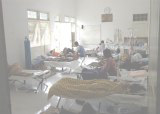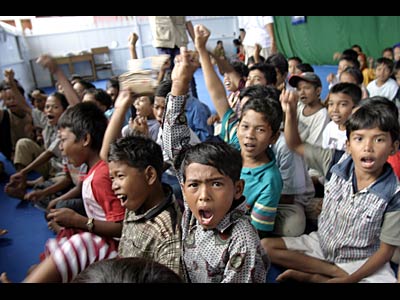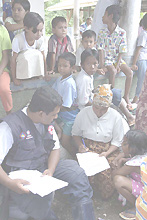Current Efforts .
Boarding schools have held a prominent place in the social network of children's education within Aceh, and in the aftermath of disaster, now serve as aid camps.
UNICEF has launched a four-point plan to save the children in the region
-focusing on basics such as clean water, adequate sanitation, nutrition, and routine medical care.
-giving high priority to identifying children who have lost their families, and reuniting them with their extended families and communities.
-ensuring the children are protected from child traffickers and sex trade predators.
-helping children cope with the tradegy by getting them back in school as soon as possible and training teachers to recognize signs of severe trauma.
Orphans International (OI) has begun the process of the organized renting of 10 homes within the next six months around the outskirts of Banda Aceh, housing orphans and house parents. There are plans to raise the number of houses to 20 within the second six months.
Other plans for the care of children include the building of more Islamic boarding school facilities, much like existing boarding schools within urban areas, which now serve as relief camps.
|
 |





